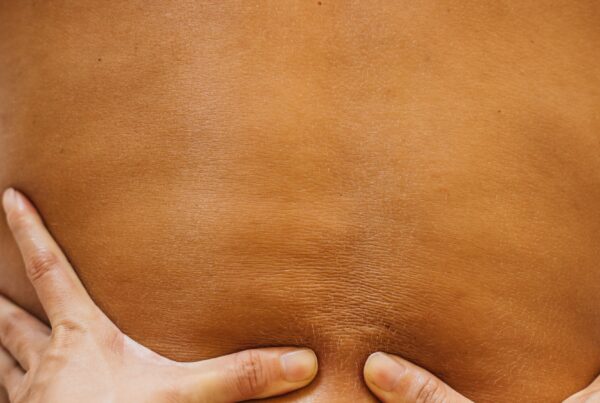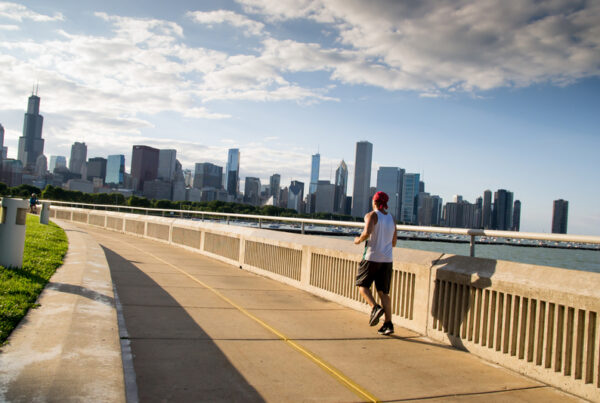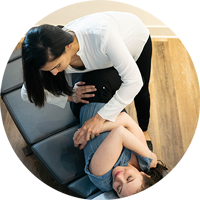Back pain is as old as time and it turns out, the mysteries to treating it are linked to indigenous cultures across the world.
Back pain is nearly as inescapably American as apple pie. As NPR recently reported, most Americans will experience trouble with their backs at some point in their lives. With at least one half of Americans reporting back pain each year, back pain is one of the most common reasons for missed work.
Americans aren’t alone their suffering. Low back pain is said to be the leading cause of disability worldwide. Which is one reason our team of Chiropractors and Rehabilitation Specialists were excited to see this topic at the top of national news, and we were just as eager to see how our work with patients in Chicago compares with indigenous cultures around the world where back pain is rare – if in existence at all.
Thanks to the recently highlighted studies of acupuncturist Esther Gokhale, a world traveler and personal sufferer of back pain, we can take cues from cultures with low rates of back pain by looking at how they stand, sit and walk.
 What Gokhale discovered is the same thing we address every single day. Instead of making a habit out of treatments and surgery, you can make a change of your own habits. As Lincoln Park Chiropractor, Dr. Maggie Kasten empahsizes, “Everyone wants to age gracefully and be flexible and pain-free, and we know that having a healthy posture will ensure that.”
What Gokhale discovered is the same thing we address every single day. Instead of making a habit out of treatments and surgery, you can make a change of your own habits. As Lincoln Park Chiropractor, Dr. Maggie Kasten empahsizes, “Everyone wants to age gracefully and be flexible and pain-free, and we know that having a healthy posture will ensure that.”
At Aligned Modern Health we call it “Posture Remodeling” and in every step we teach, we ensure that every step you’re taking becomes a healthy exercise.
“Healthy posture can make everyday life into exercise,” explains Kasten. “Every step you take, if you’re doing it in the proper way, becomes a rep for your glute strengthening and becomes a stretch for your calf, your soleus, and so on.”
Proper posture and properly using your body to work against gravity is the foundation of physical health. While indigenous people don’t have a magic cure for back pain, their posture can reveal secrets we can all appreciate. Very similar to Gokhale’s “Five Tips for Better Posture and Less Back Pain,” which is listed below, we teach our patients exercises that help apply these principals to their workouts and daily activities. If you’d like to learn how we can empower you to overcome back pain, click here to contact us for a complimentary consultation at one of our five convenient locations where we offer back pain treatment in Chicago and a range of wellness services.
Esther Gokhale’s Five Tips For Better Posture And Less Back Pain
Try these exercises (fwhile you’re working at your desk, sitting at the dinner table or walking around, Esther Gokhale recommends.
1. Do a shoulder roll: Americans tend to scrunch their shoulders forward, so our arms are in front of our bodies. That’s not how people in indigenous cultures carry their arms, Gokhale says. To fix that, gently pull your shoulders up, push them back and then let them drop — like a shoulder roll. Now your arms should dangle by your side, with your thumbs pointing out. “This is the way all your ancestors parked their shoulders,” she says. “This is the natural architecture for our species.”
2. Lengthen your spine: Adding extra length to your spine is easy, Gokhale says. Being careful not to arch your back, take a deep breath in and grow tall. Then maintain that height as you exhale. Repeat: Breathe in, grow even taller and maintain that new height as you exhale. “It takes some effort, but it really strengthens your abdominal muscles,” Gokhale says.
3. Squeeze, squeeze your glute muscles when you walk: In many indigenous cultures, people squeeze their gluteus medius muscles every time they take a step. That’s one reason they have such shapely buttocks muscles that support their lower backs. Gokhale says you can start developing the same type of derrière by tightening the buttocks muscles when you take each step. “The gluteus medius is the one you’re after here. It’s the one high up on your bum,” Gokhale says. “It’s the muscle that keeps you perky, at any age.”
4. Don’t put your chin up: Instead, add length to your neck by taking a lightweight object, like a bean bag or folded washcloth, and balance it on the top of your crown. Try to push your head against the object. “This will lengthen the back of your neck and allow your chin to angle down — not in an exaggerated way, but in a relaxed manner,” Gokhale says.
5. Don’t sit up straight! “That’s just arching your back and getting you into all sorts of trouble,” Gokhale says. Instead do a shoulder roll to open up the chest and take a deep breath to stretch and lengthen the spine.
The Secrets for Back Pain Treatment In Chicago Can Be Found Across the Globe
Sign up for our free newsletter or follow us to get healthy tips, special offers, and more!
Locations
© 2024 Aligned Modern Health
- Services
-
Heal faster and more effectively
We offer multiple treatment options and specialists under one roof to address everything from pain to dietary imbalances to emotional health - without the use of drugs or surgery.
-
- People
-
Top-rated healthcare providers, changing the face of healthcare
Whether you want to eliminate pain, increase your energy, or address unresolved symptoms of existing health concerns, our team is ready to work with you to create a roadmap for optimal wellness.
-
- Locations
-
Convenient locations throughout Chicago and Suburbs
As a leading wellness center in the Chicagoland area, Aligned Modern Health is committed to serving you wherever you are. Explore our locations to find the most convenient clinic for you.
-
- Resources
-
We believe that the greatest medicine of all is to teach our patients how to not need it.
We pride ourselves in leadership through patient and community education that goes beyond our clinic walls. Every visit is backed by added-value resources, comprehensive support, and community experiences to help you achieve all your wellness goals.
-
- Articles
- Shop
- Book Now








